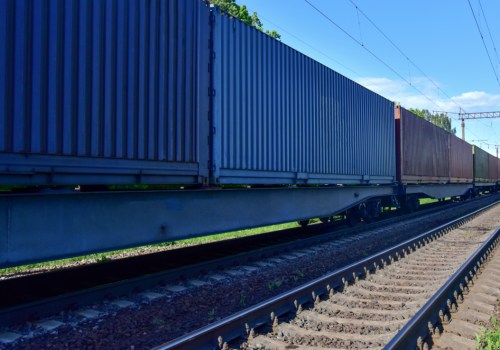In today’s fast-paced supply chain environment, businesses are constantly searching for innovative ways to move goods efficiently, cost-effectively, and sustainably. Rail freight services have emerged as a cornerstone of modern logistics, providing a solution that balances volume, reliability, and environmental responsibility. Especially for companies dealing with large-scale transportation over land, rail offers an efficient alternative to trucking alone, helping reduce traffic congestion, fuel consumption, and emissions. These benefits are especially critical in an era where efficiency and sustainability are not just goals but necessities.
Cost-Effective and Scalable Solutions
One of the key advantages of rail freight services is their scalability. A single train can carry the load of several hundred trucks, making it an economical choice for bulk and long-distance shipments. This ability to move large quantities of goods in one trip lowers per-unit shipping costs and allows businesses to manage inventory more strategically. In industries such as manufacturing, agriculture, and construction, where heavy materials and high volumes are standard, this cost efficiency is invaluable. Rail freight also offers predictable scheduling, which reduces downtime and makes inventory forecasting more accurate.
Environmental and Infrastructure Advantages
Beyond cost savings, rail freight also presents a compelling case for environmental stewardship. Railroads are significantly more fuel-efficient than trucks—using approximately one gallon of fuel to move a ton of freight over 470 miles. This dramatically reduces greenhouse gas emissions per ton-mile compared to road transport. Additionally, rail lines relieve pressure on road infrastructure, decreasing the wear and tear on highways and contributing to safer, less congested roads. For businesses and municipalities alike, this translates into long-term savings and a smaller ecological footprint.
Technology and Intermodal Synergy
Advancements in logistics technology have further elevated the effectiveness of rail freight. With GPS tracking, automated loading systems, and real-time analytics, modern rail operators can deliver higher transparency and control over cargo movements. Moreover, the integration of intermodal transport—where cargo containers are seamlessly transferred between trucks, trains, and ships—adds another layer of flexibility. This allows goods to move through different regions and modes of transport without repacking, minimizing handling costs and transit times. Businesses can thereby align their logistics strategy with consumer demand patterns and global supply chain dynamics.
Regional Impact and Economic Development
Rail freight doesn’t just benefit corporations—it’s a powerful engine for regional economic development. Efficient rail service opens new markets to rural producers, links inland hubs with seaports, and connects manufacturers with national distribution networks. In regions like the Lehigh Valley, Pennsylvania, the presence of active rail lines supports not only industrial growth but also ancillary services. For example, businesses involved in heavy debris removal, such asRail freight doesn’t just benefit corporations—it’s a powerful engine for regional economic development. Efficient rail service opens new markets to rural producers, links inland hubs with seaports, and connects manufacturers with national distribution networks. In regions like the Lehigh Valley, Pennsylvania, the presence of active rail lines supports not only industrial growth but also ancillary services. For example, businesses involved in heavy debris removal, such as roll off dumpster rentals in Lehigh Valley, often operate more effectively with nearby rail access, allowing for timely disposal or shipment of waste materials generated by construction or demolition. This synergy between rail and support services reinforces the logistics ecosystem and enhances the region’s economic resilience.
Challenges and Industry Adaptation
Despite its strengths, rail freight logistics is not without challenges. Rail infrastructure requires significant investment and maintenance, and rail lines do not reach every destination. Coordination with last-mile delivery partners is crucial to ensuring goods complete their journey efficiently. Additionally, in times of labor shortages or extreme weather, rail schedules can be disrupted. However, industry players have adapted by investing in predictive analytics, resilient infrastructure planning, and better communication with customers. Many logistics firms now build rail transport into a broader multimodal strategy that ensures continuity regardless of disruptions.
The Future of Smarter Logistics
Looking forward, the role of rail freight in smarter logistics will only grow. As e-commerce expands and global trade continues to evolve, the demand for reliable, high-capacity, and sustainable transportation methods will intensify. Public and private investment in rail infrastructure is expected to increase, with emphasis on electrification, automation, and digital integration. This progress will further solidify rail’s role as a vital artery in the logistics network. Businesses that align with these developments—leveraging the strengths of rail while addressing its limitations—stand to gain a competitive edge in both operational efficiency and environmental responsibility.
Conclusion
Rail freight services have proven themselves as indispensable tools in driving smarter logistics. Through cost efficiency, environmental benefits, and technological integration, they help businesses operate more strategically and sustainably. Their contribution to regional economies and ability to mesh with other logistics services adds even greater value. As supply chains grow more complex, rail freight offers a stable, scalable, and smart solution for navigating tomorrow’s logistical demands—keeping industries on track for success.



